The gorgeous Pothos belongs to the genus Ephipermium Aureum that includes over 50 types of creepers or climbers plants native to tropical regions of Asia and Australia. It is also known as Ceylon creeper, devil’s ivy, Ivy arum, Taro vine, or Money plant.
In the tropical areas, where it grows natively, the pothos plant climbs high tropical vegetation with the help of aerial roots or crawls on shady forest floors.
As a houseplant, it brings an irresistible jungle vibe into any interior, cascading over the edge of hanging baskets or wrapping around a moss pole as a climber.
Its shiny heart-shaped leaves, densely strung on long stems, are not the only reason for its popularity. Despite its tropical origin, the Pothos is an affordable, easy to care plant, suitable even for novice gardeners!
It easily adapts to standard home conditions, tolerates irregular watering or low-light surroundings, and, as all mentioned is not enough, it purifies the air!
How Can You Tell The Difference Among Pothoses?
The indigenous pothos that grows in the wild is a monochromatic plant with shiny green leaves. However, over time, horticulturists have developed numerous variegated cultivars with a wide range of color shades, sizes, and shapes of leaves.
Consequently, it is not surprising that it is sometimes difficult to distinguish them. Moreover, many two-color or three-color varieties may lose most of their characteristics if they grow in inadequate lighting, making things even more complicated.
If you have doubts about the type of pothos you have, below we bring you the characteristics and descriptions of some of the most popular species of this exceptional plant.
Monochrome Pothos Types
The rule that lighting dictates color intensity does not apply to monochrome types of pothoses. It means that the plant will generally remain monochromatic whether it grows in bright light or shaded position or under artificial lighting.
Neon Pothos
Although Neon pothos does not display charming splash patterns, it is not a disadvantage at all! The plant compensates the absence of multicolored performances for the intense, vibrant, unique neon green or lime green foliage.
The younger leaves have a more intense color than the older ones, which get darker over time, so the mature plants look extremely decorative with intertwined leaves in different shades of green.
In addition to this unusual color that brings freshness to the space, Neon pothos has slightly longer leaves and grow more rapidly than other pothos varieties.
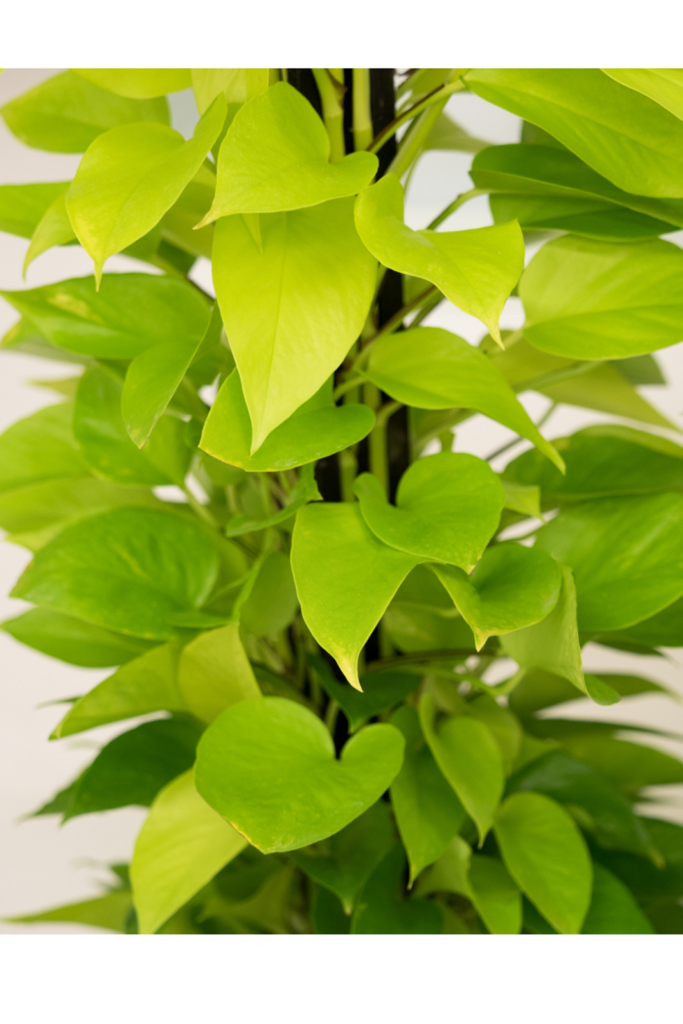
Jade Pothos
As its name suggests, this type of pothos has waxy, shiny, leathery, two to three-inch-long leaves in the color of jade. It is most similar to native, green leaves pothos, staying monochromatic regardless of the lighting level, and only exceptionally on some of its leaves can a slightly lighter shade appear.
Interestingly, when new variegated types appeared, they have pushed this plant into the background, so today, jade pothos is much rarer than its multicolored cousins.
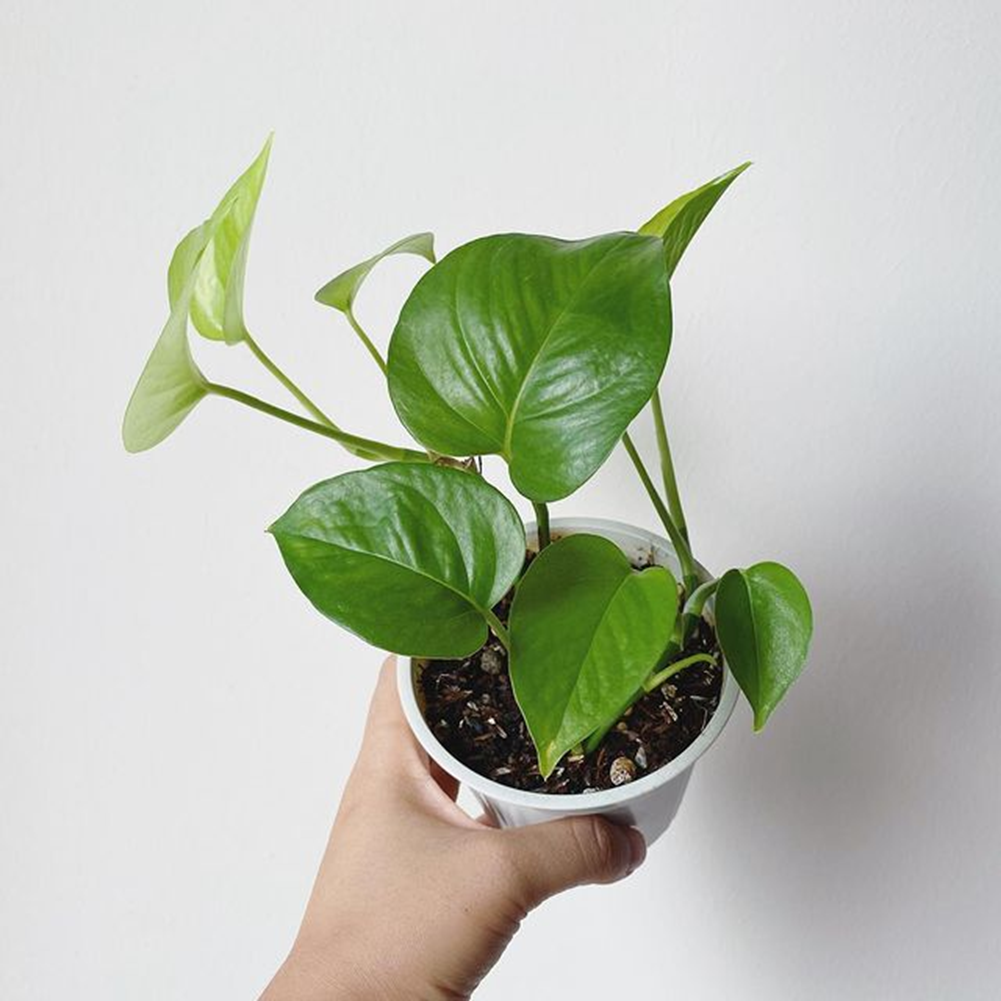
RELATED: Why Are The Leaves Turning Yellow? 8 Reasons Why Your Pothos Is Changing Color
Types Of Pothos With Yellow Variegation
Golden Pothos
Among all types of pothos plants grown indoors, the most common is the Golden pothos or devil’s ivy. Yet, it does not mean that it is less attractive or striking than pothos varieties with variegated leaves. This durable climbing plant has specific yellow variegation or cream-yellow sparkles on the vivid, emerald-green foliage.
Regardless of the amount of light that the golden pothos receives, it always withstands the variegation, but the fact is that the pattern is more pronounced and the colors more noticeable in bright, indirect light.
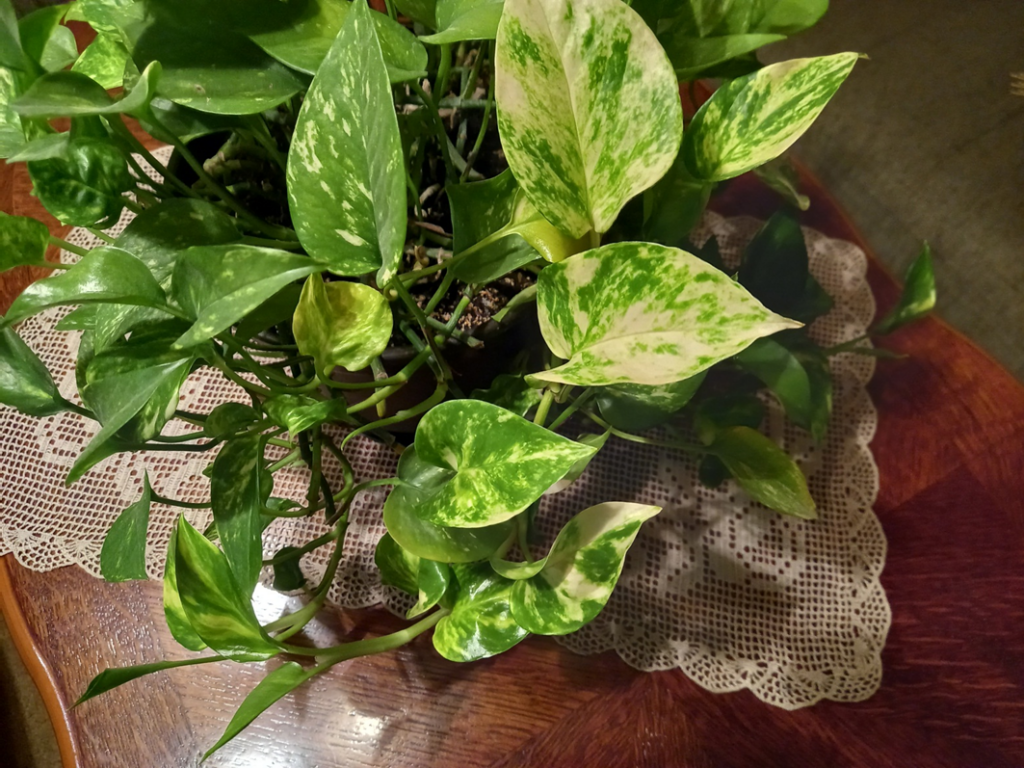
Hawaiian Pothos
Hawaiian pothos is a bicolor, green-yellow plant, but unlike golden pothos, it has huge leaves that can grow up to 14 inches long! Also, the yellow patterns on the leaves are paler and often closer to cream than the intense golden yellow present on golden pothos leaves.
In general, it is a much more robust pothos plant that can grow into an impressive vine up to 30 feet long in the open. Even in the conditions of home cultivation, it can grow 10 feet long!
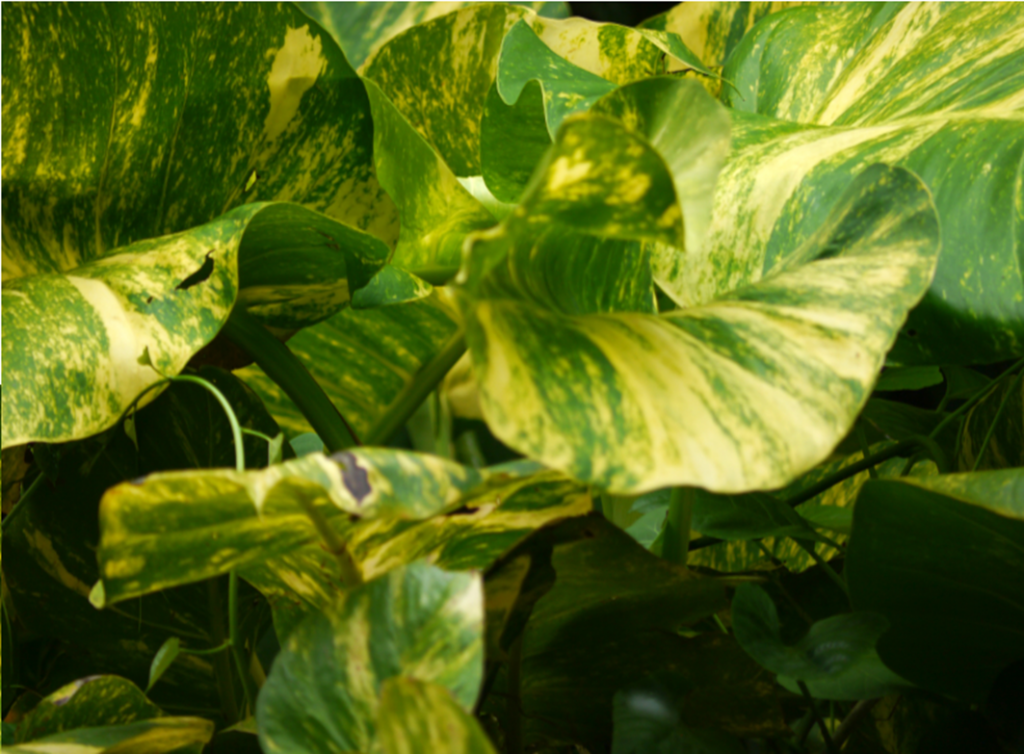
Types Of Pothos With White Variegation
1. Pearls And Jade Pothos
Pearls and Jade Pothos is an almost classic bicolor variety that you can easily find in every better-equipped garden center. The plant has more rounded and slightly smaller leaves than other types of similar colors.
The leaves are in a greenish-white combination, with shades of pale green distributed along the central nerve of the leaf and white variegation more towards the edges. The colors do not melt or create a splash pattern but make separated portions. Also, white dots often occur on green surfaces and vice versa, which is not characteristic of the other pothos types.
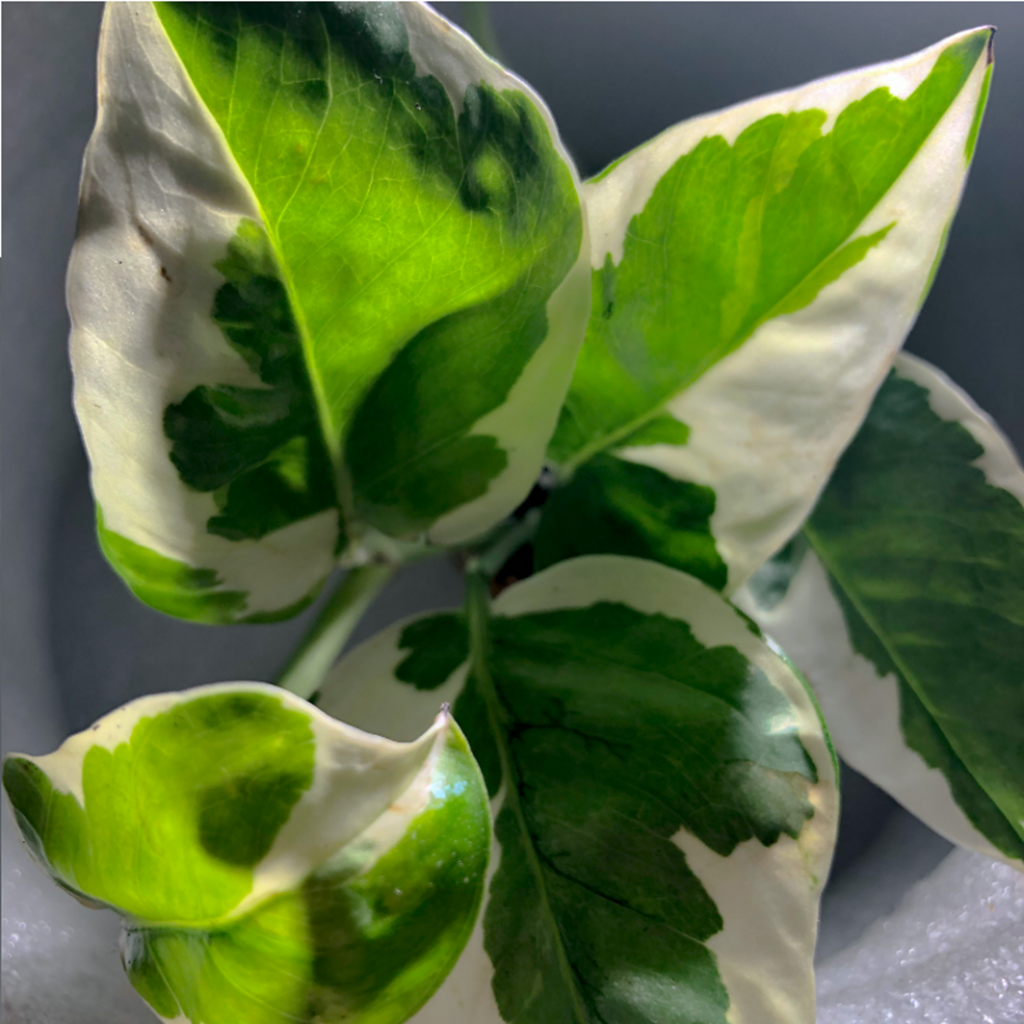
2. Njoy Pothos ( Epipremnum Aureum Njoy)
Njoy pothos is close to the Pearls and Jade variety with a similar combination of green stains in the middle and white areas towards the edge of the leaf blade. What distinguishes these two pothos plants is the absence of green spots on the white parts.
In addition, the leaves of njoy pothos are irregular and deviate from the geometrically precise heart shape of some of its relatives. This plant looks much better when you regularly prune it because it will never form a thick and long waterfall of leaves like the one in the golden pothos.
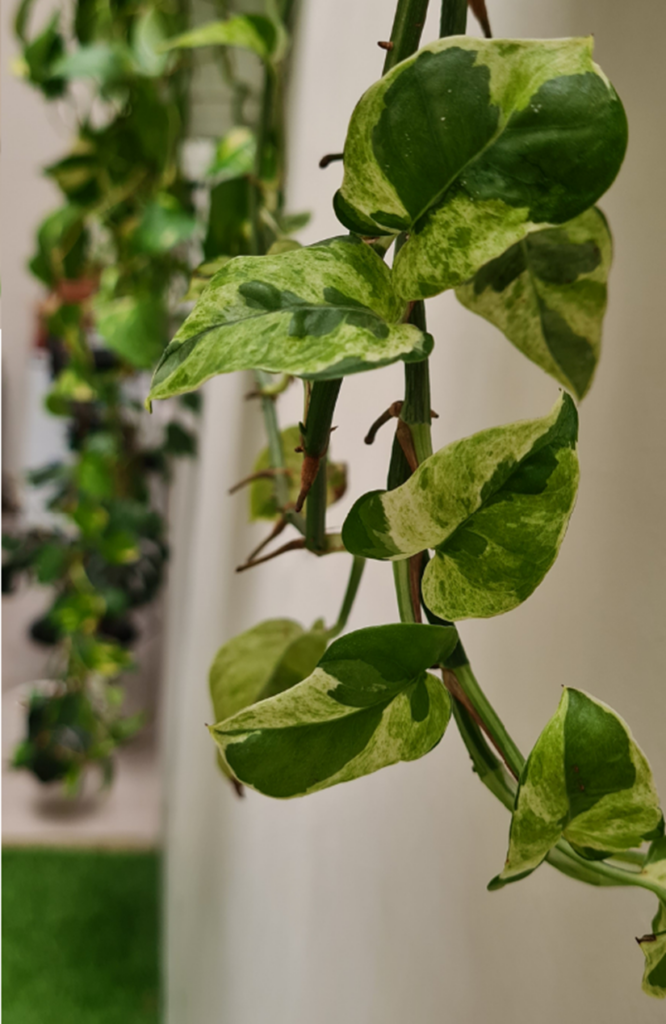
3. Marble Queen Pothos (Epipremnum Aureum Marble Queen)
Marble Queen pothos is one of the most popular types of this trailing vine due to its outstanding coloration in a marble pattern. The white and green splashes blend on the leaf surface, creating a striking color display.
Although marble queen pothos tolerates low-light conditions, it looks more beautiful when it grows in the abundance of indirect lighting. Therefore, if you want a lot of splashes, place it near a light source but out of direct sunlight in the hottest part of the day. Bright indirect light is the best option for this pothos variety.
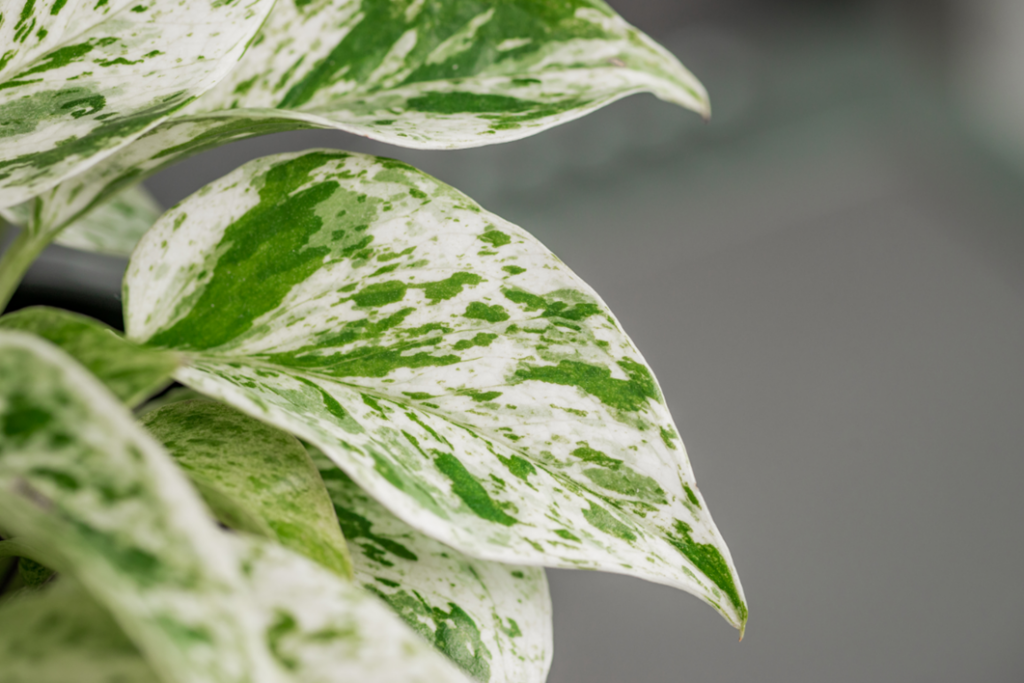
4. Snow Queen Pothos Vs. Marble Queen Pothos
Sometimes it is puzzling to distinguish these two types of pothos. The shape, size, and even color of the leaf are almost identical. Yet, Snow Queen pothos is a variety with green splashes on a white leaf background, while Marble Queen has an inverse combination.
In other words, Snow Queen is more white than the green plant. In addition, Marble Queen has undertones that are creamy white, sometimes even yellowish white.
In addition, marble queen has undertones that are creamy white sometimes, even yellowish-white, and bright patterns can appear only in one part of the leaf or on one half. The Snow Queen, on the other hand, has a more or less mottled entire leaf surface.

5. Manjula Pothos (Epipremnum Aureum Manjula)
Unlike the previous two types, Manjula pothos is much harder to find in the garden centers. It differs from other green and white varieties by the shape of the foliage and the way they are variegated. The manjula pothos leaves are more rounded, and they tend to curve at the top, which gives the plant a playful shape.
The leaves have no spattered pattern but green and white patches or stains.
It is a slow-growing species with a tendency to develop long stems with few leaves. It looks much better if you regularly prune it. The procedure stimulates a denser and compact shape creating a bushy growth habit.
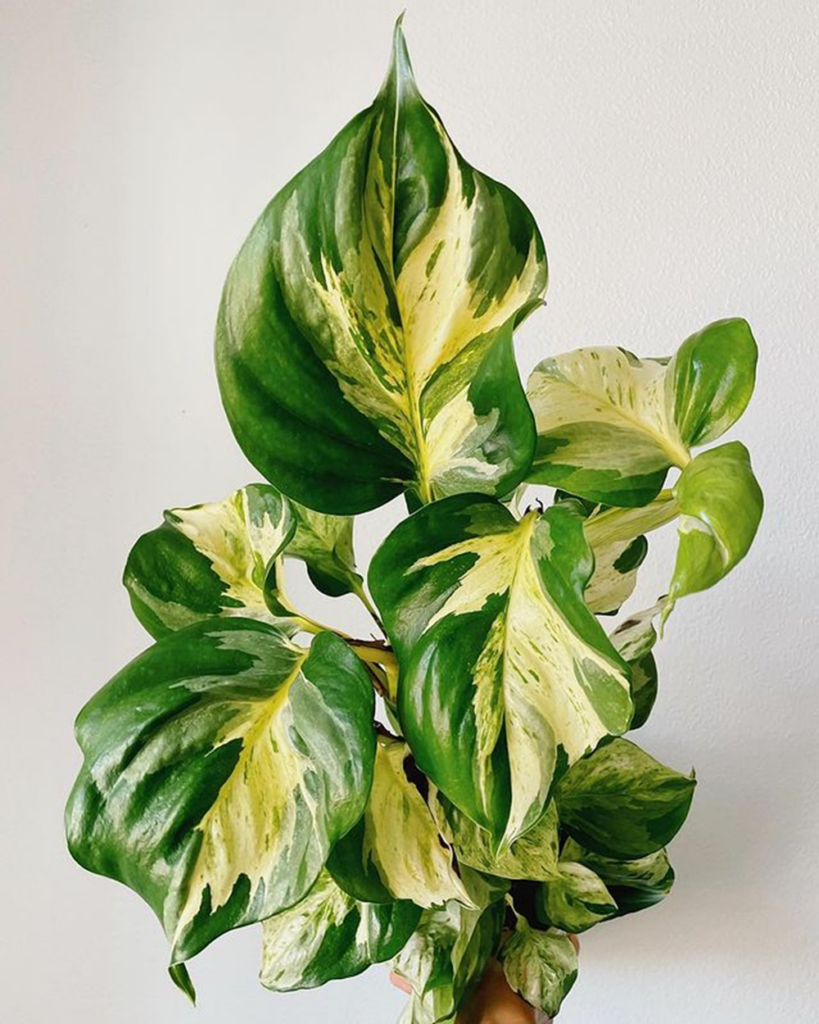
6. Harlequin Pothos (Epipremnum Aureum Harlequin)
It is another type of greenish-white pothos that resembles other varieties of the same color. While most green-white varieties can have some creamy or yellowish subtones, in combination with neon, lime-green, and yellow-green, this is the only green-white plant without shades of other colors. The absence of mixed tones that do not appear on the foliage is what makes this plant unique in the world of pothos.
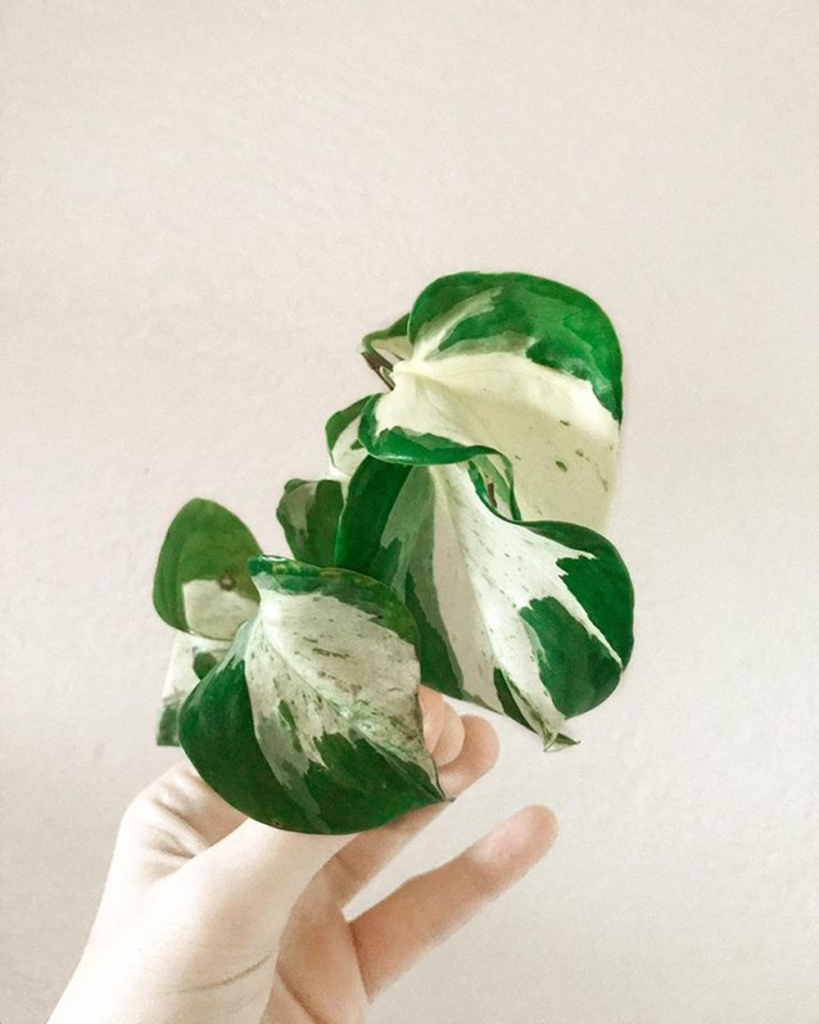
7. Glacier Pothos (Epipremnum Aureum Glacier)
Glacier pothos is a tricolor pothos plant with beautifully variegated foliage with white, light green, dark green, or gray-green blotches. Its leaves are often irregular or asymmetrical in shape, making them recognizable among pothoses. Green spots appear on the white parts, but there are no white spots on the green patches!
The plant grows slowly, and it will not quickly escape from the container nor needs a moss pole to curl around it! In fact, with regular pruning, you can grow it as a bushy plant for a long time, so you can keep it on the table and not necessarily in a hanging basket.
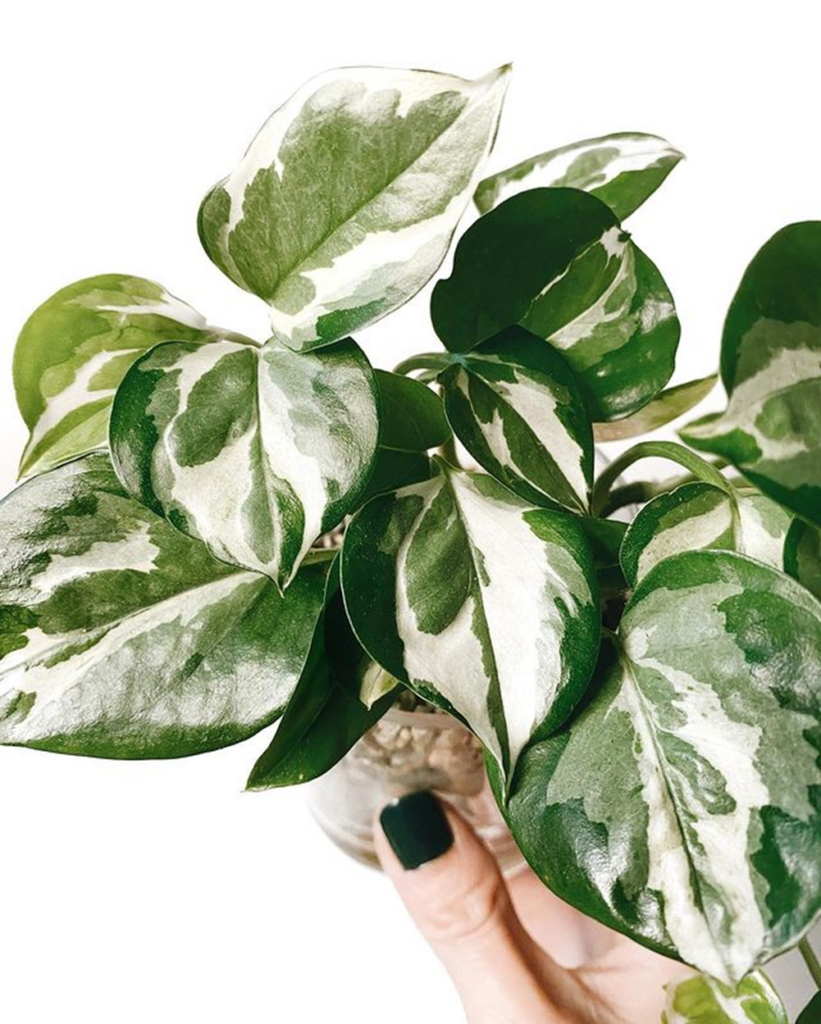
RELATED: Pothos Leaves Curling, its Causes and Easy Ways to Fix Leaf Curl
Silver Blue Types Of Pothos Varieties
Cebu Blue Pothos (Epipremnum Pinnatum Cebu Blue)
One of the rarest and most unusual cultivars is Cebu Blue Pothos. It got its name after the city of Cebu in the Philippines, and its shiny dark green leaves have a silvery blue almost metallic sheen and accentuated veins.
Botanically, the plant is called Epipremnum Pinnatum Cebu Blue, but this ‘detail’ is not a reason for not including it in the group of rare pothoses. Additionally, the leaves have bumps and uneven surfaces, which is not a feature of other pothos plants.
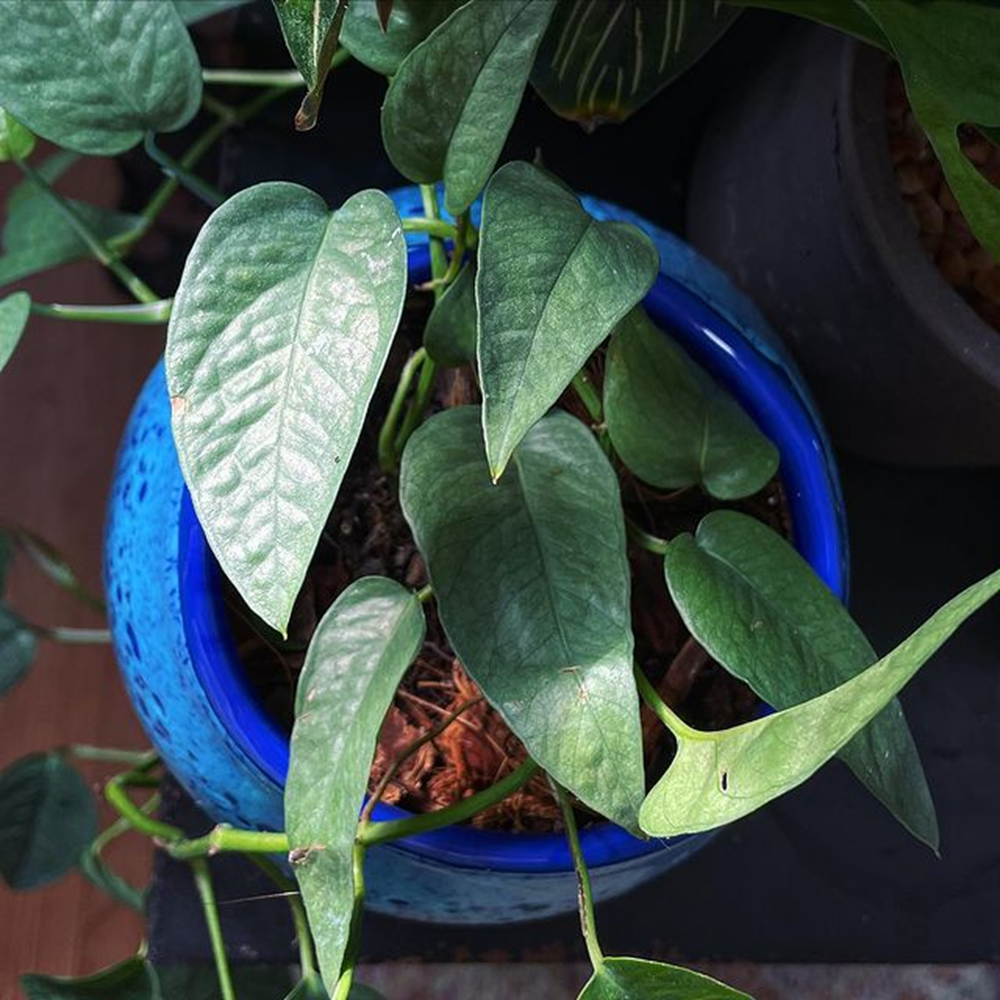
Shades Of Green Pothos Varieties
Jessenia Pothos (Epipremnum Aureum Jessenia)
Jessenia Pothos is a sophisticated pothos variety with dark green, emerald, and bright chartreuse green shades that intertwine on the leaves in almost equal proportions creating the marble pothos pattern. Its colors remain stable regardless of lighting. In low light conditions, darker shades can dominate, but jessenia pothos will never have monochromatic leaves as well.
Also, even in abundant amounts of light, the leaves of jassenia pothos will not get yellow tones similar to those of the golden pothos, and they will remain its variegation. Shades of fresh, vibrant tones overflow the surface of its elongated heart shaped leaves with a pointed tip creating a discrete marble pattern.
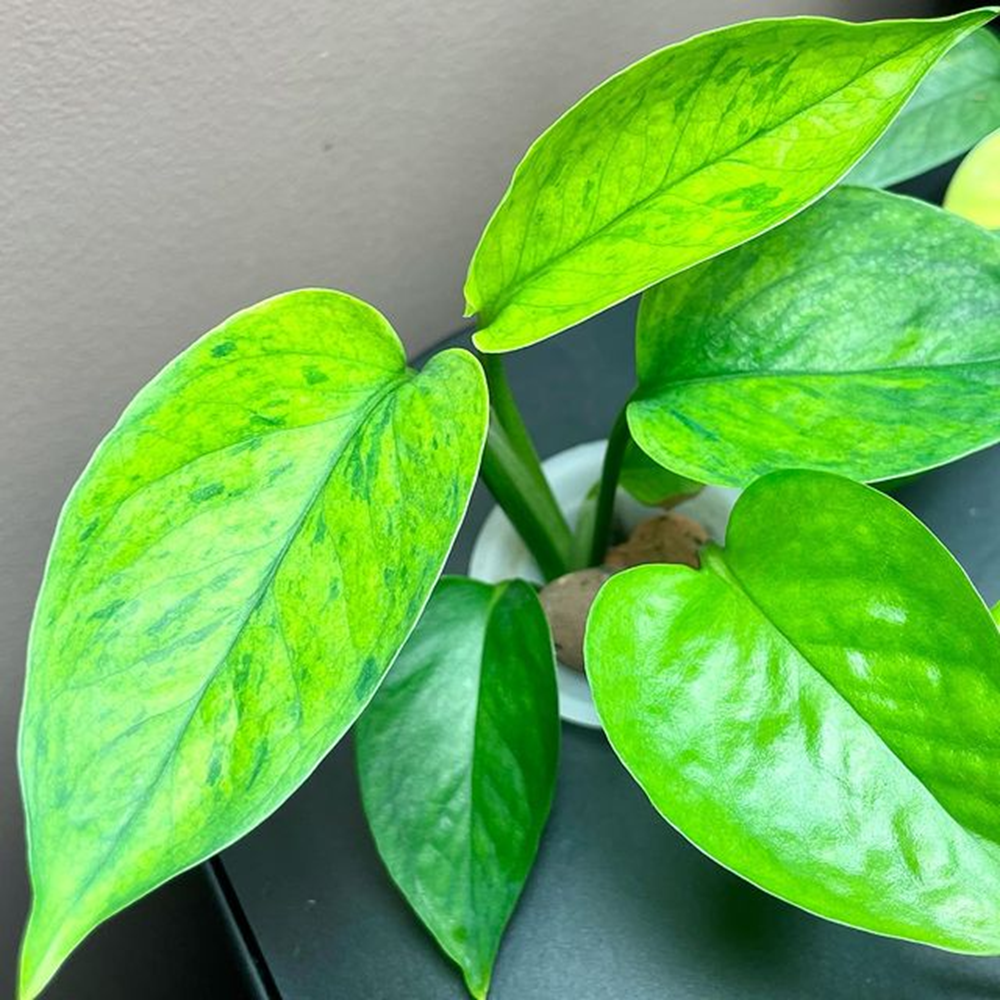
Global Green Pothos (Epipremnum Aureum Global Green)
Global green pothos is also one of the horticultural novelties on offer since 2020. Unlike the jassenia pothos plant, this type with different shades of medium green does not have a marble pattern but spotted leaf blades with the lighter green variegation arranged closer to the central nerve and darker towards the edges of the leaves.
It will show its full decorative potential if you grow it in bright light where its green variegation will be more noticeable.
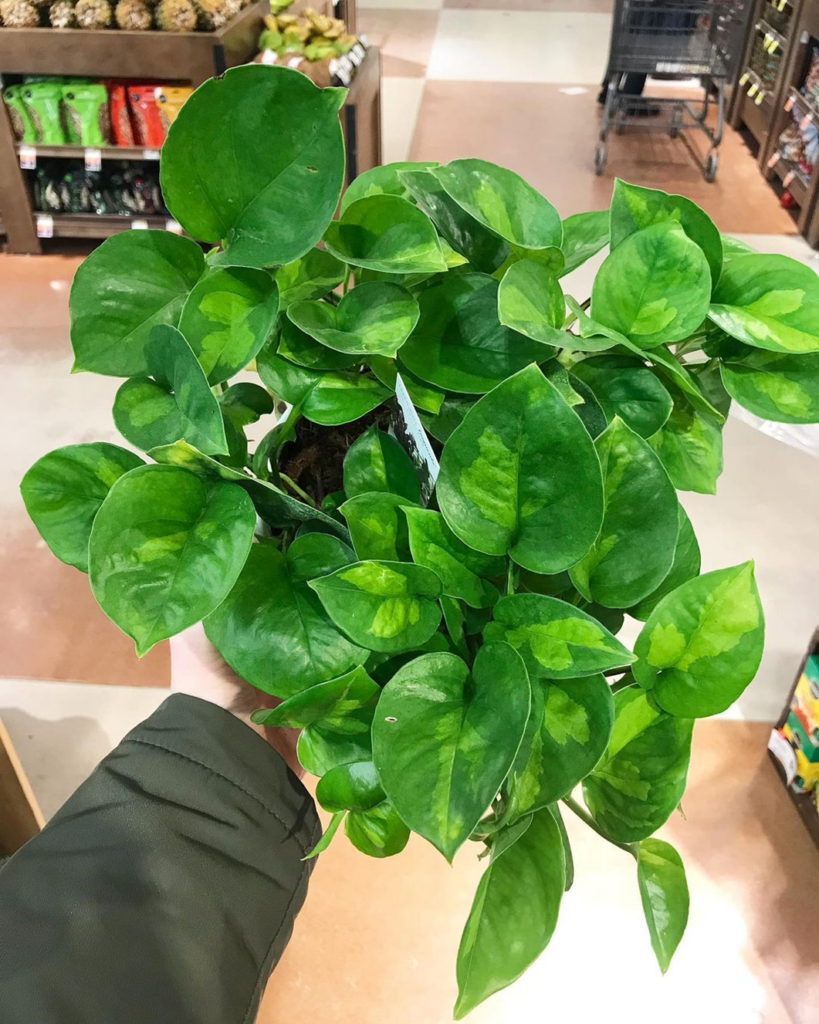
Plants Similar To Pothos
The Araceae family includes numerous genera, so it is not surprising that some of them are very similar. Heart-shaped shiny leaves of medium size, vining habit, and areal roots are not characteristic of pothos plants only but also some Philodendrons and Sciandapsus. Therefore, some of these plants sometimes are called pothos, although they are not according to botanist rules. Here are some of the most characteristic examples:
Silver Satin Pothos (Sciandapsus Pictus)
One of the most common intruders among the pothos plants is Sciandapsus Pictus, commonly called Satin Pothos or Silver Pothos. It has dark green foliage, dotted with irregular silver stains and spots, and often bordered with a thin silver stripe.
Unlike pothos Epipremnum aureum, the leaves are not shiny but matte, which gives the plant a slightly velvety impression.
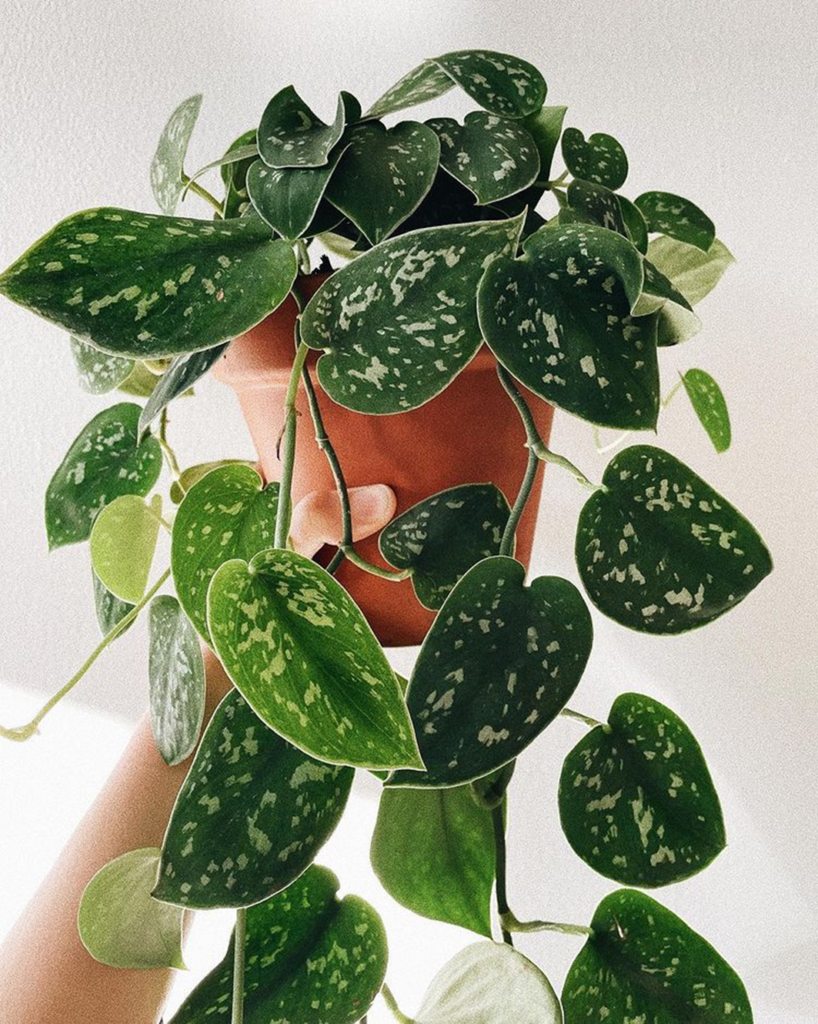
Heart-Shaped Philodendron vs. Pothos Plant
At first glance, these tropical plants also look like pothos (Epipremnum aureum): The leaves have an almost identical shape. Both plants are climbers and come from the same tropical zone.
However, there are differences by which you can distinguish them. Philodendron leaves are much thinner and have a softer structure. On the other hand, pothos plants generally have thicker, waxen leaves.
Another visible difference is aerial roots. Pothos plant has one thick aerial root on each node, while the philodendron has several thinner roots by which it attaches to the host along which it grows.
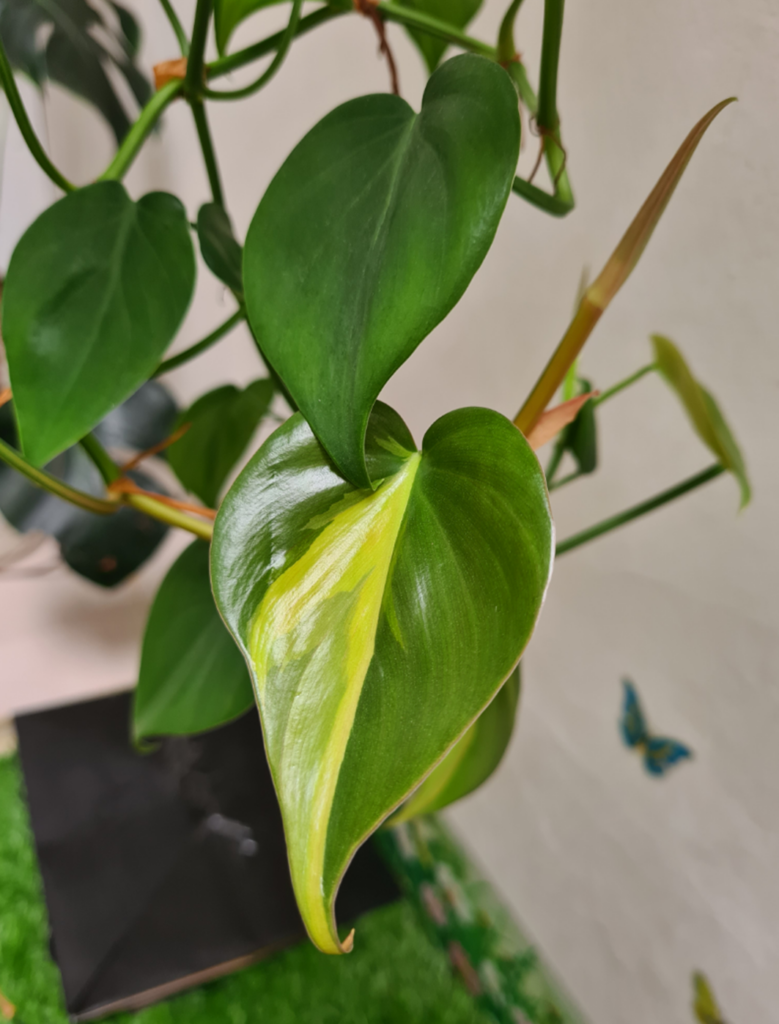
Frequently Asked Questions (FAQs)
How many pothos varieties are there?
The exact number is impossible to determine since the new varieties appear constantly! However, it occasionally happens that the cultivar is not stable, so the offspring do not always inherit traits from the parent plant. For now, the number is around 15 plus!
What is the rarest pothos?
Several pothos varieties are not easy to find. The Harlequin pothos and Cebu Blue Pothos lead the rare pothos varieties list, being very sought after among the plant collectors.
Which pothos grows fastest?
The general rule is that monochromatic plants grow much faster than variegated pothos varieties. The reason is the amount of chlorophyll that the leaves contain. Plants with colored lighter or white leaves have significantly less chlorophyll, which directly affects the speed at which physiological processes take place within the plant and thus the growth rate.
Is there a variegated neon pothos?
There is! Discrete, cream-yellow stripes appear, but the dominant color is still neon green on the leaves of this type. For some reason, one-color neon pothos is more popular than the variegated one!
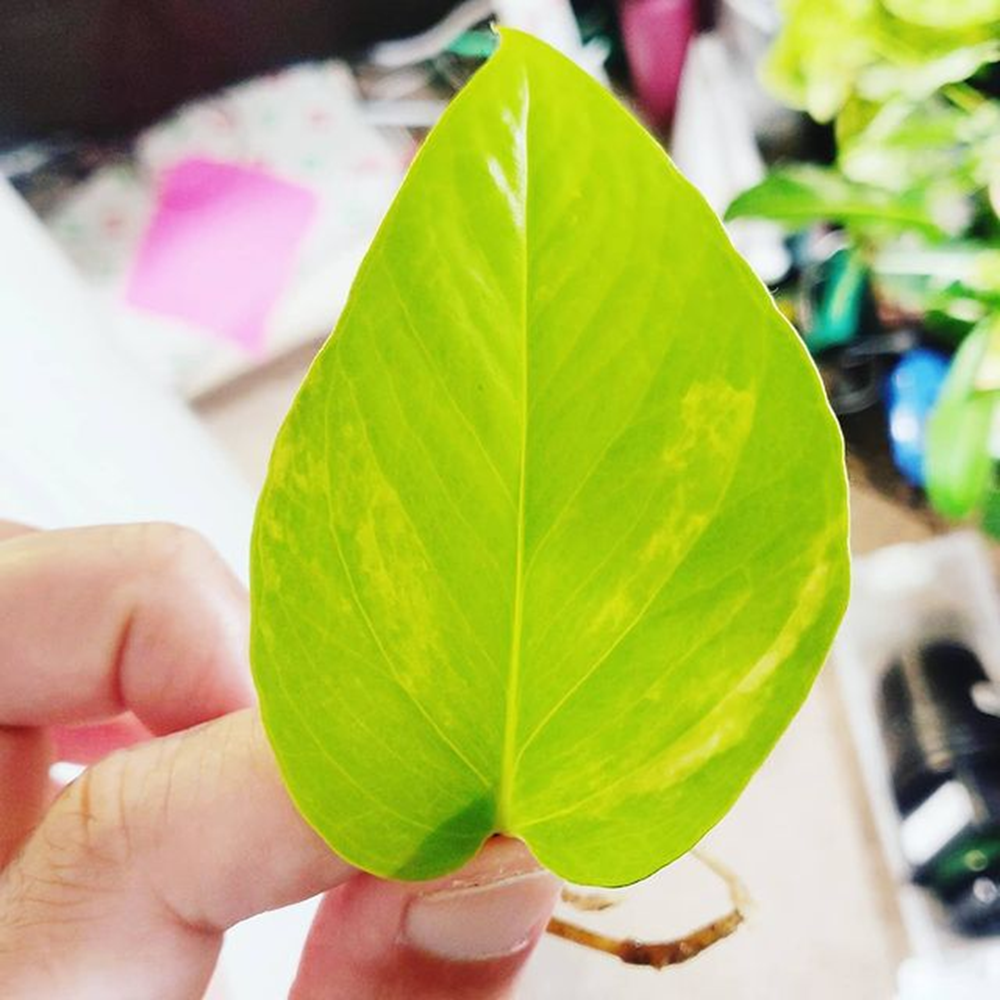
Discover new plants, check out Alocasia Plants, Tropical Rainforest Plants, Egyptian Plants and South African Plants







